Yuan Xiao Festival
Lantern Festival: China's Luminous Celebration of Unity and Light
The Yuanxiao Festival, also known as the Lantern Festival (Yuánxiāo Jié), marks the climax of Chinese New Year celebrations, blending ancient astronomy, folklore, and communal joy. Falling on the 15th day of the first lunar month—the first full moon of the year—it symbolizes reunion, hope, and the triumph of light over darkness. For travelers, Yuanxiao offers a sensory feast: from dazzling lantern displays to the sweet aroma of glutinous rice dumplings, all while honoring traditions that date back millennia. Below, we explore its cosmic roots, vibrant customs, and enduring cultural resonance.
 Dates & Public Holidays: A Lunar Spectacle
Dates & Public Holidays: A Lunar Spectacle
▶ Lunar Date & Seasonal Significance
The festival occurs on the 15th day of the first lunar month, typically in February or early March in the Gregorian calendar. This date aligns with the first full moon after the Spring Festival, symbolizing completeness and renewal. Ancient Chinese believed the moon’s brightness on this night could ward off evil and guide spirits.
▶ 2025 Key Dates
- Lunar Date: February 12, 2025 (15th day of the 1st lunar month)
- Note: Yuanxiao is not a national public holiday, but celebrations peak nationwide, with cities extending light displays and cultural events.
▶ Public Holiday Schedule (2025–2029)
| Year | Lunar Date | Gregorian Date Range (Peak Celebrations) |
|---|---|---|
| 2025 | February 12 | February 11–13 (Weekend focus) |
| 2026 | March 3 | March 2–4 |
| 2027 | February 20 | February 19–21 |
| 2028 | February 9 | February 8–10 |
| 2029 | February 27 | February 26–28 |
 Core Traditions & Celebrations: From Myth to Modern Marvels
Core Traditions & Celebrations: From Myth to Modern Marvels
▶ Lantern Displays: Illuminating the Night Sky
- Origins: Legend traces lanterns to Emperor Ming of the Han Dynasty, who ordered lanterns lit to honor Buddha. Others say they guide lost souls or celebrate the defeat of the Nian monster.
- Modern Ritual: Cities host massive lantern parks with themes ranging from zodiac animals to space exploration. In Nanjing, the Qinhuai River Lantern Fair draws millions with its 3D-mapped lanterns.
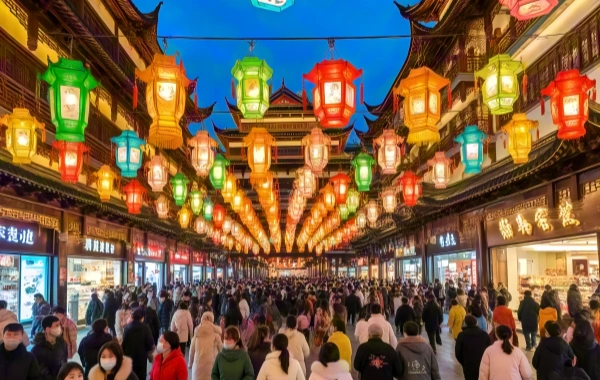
▶ Yuanxiao (Tangyuan): Sweet Dumplings of Unity
- Symbolism: Glutinous rice balls filled with sweet or savory fillings (sesame, red bean, or pork) represent family togetherness. Their round shape mirrors the full moon.
- Regional Variations:
- Shanghai: “Tangyuan” with crab roe and pork filling.
- Fujian: “Yuanxiao” fried instead of boiled, served with ginger syrup.
- Hong Kong: Glittering “crystal” dumplings made with translucent tapioca flour.
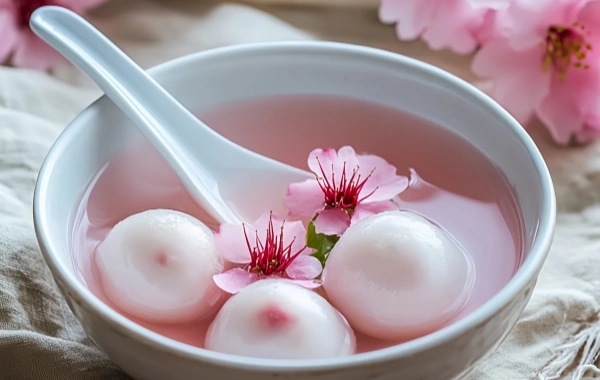
▶ Lantern Riddles: Intellectual Play Under the Moon
- History: Originating in the Song Dynasty, riddles written on lanterns tested wit and wisdom. Solving them was believed to bring good luck.
- Modern Twist: Digital riddles appear on apps and social media, while traditional markets still host calligraphers writing clues on silk.
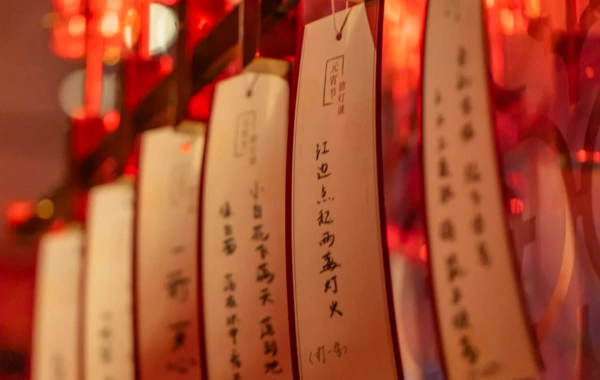
▶ Dragon & Lion Dances: Rhythms of Renewal
- Symbolism: Dragons (power) and lions (bravery) chase away evil spirits. Performers wear elaborate costumes and dance to drums, cymbals, and gongs.
- Regional Styles:
- Guangdong: Lions perform acrobatic stunts on bamboo poles.
- Taiwan: “Bombing the Dragon” involves firecrackers tossed at the dragon to energize it.
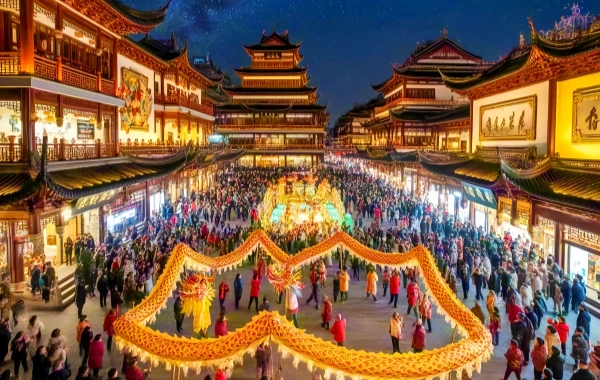
▶ Walking on Stilts & Folk Performances: Street-Level Spectacle
- Origins: Stilt-walking dates to the Zhou Dynasty, when performers entertained troops. Today, it’s a staple of temple fairs, with artists dressed as deities or animals.
- Highlight: Hebei Province’s “Lion Dance on Stilts” combines both traditions.
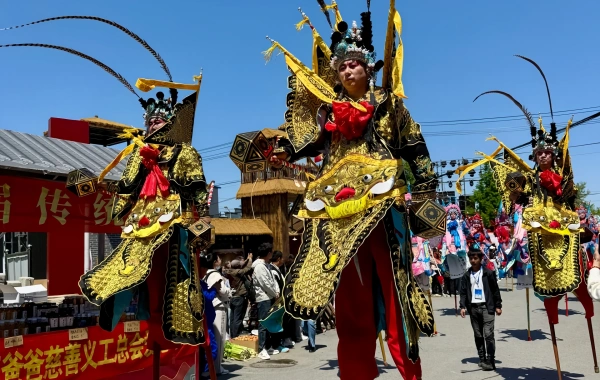
 Culinary Delights: A Feast for the Senses
Culinary Delights: A Feast for the Senses
▶ Must-Try Dishes for International Travelers
- Yuanxiao/Tangyuan: Sweet or savory rice dumplings.
- Osmanthus Cake: A jelly dessert infused with fragrant osmanthus flowers.
- Fried Dough Twists (Mahua): Crispy snacks shaped like intertwined lovers.
▶ Symbolic Foods & Their Meanings
- Oranges: Eaten for luck, as their golden color resembles gold.
- Noodles: Served long and uncut to symbolize longevity.
- Glutinous Rice Cake (Nian Gao): Though more common during Spring Festival, some regions eat it for prosperity.
 Traveling During Yuanxiao Festival: Tips & Destinations
Traveling During Yuanxiao Festival: Tips & Destinations
▶ Essential Travel Advice
- Book Early: Hotels fill up quickly, especially in cities like Shanghai and Chengdu.
- Dress Warmly: Evenings can be chilly in February/March.
- Bring Cash: Many street vendors and temple fair stalls don’t accept cards.
▶ Top 5 Destinations for International Visitors
-
- Highlight: A UNESCO site where lanterns illuminate 2,700-year-old walls.
- Activity: Join locals in making paper lanterns at traditional workshops.
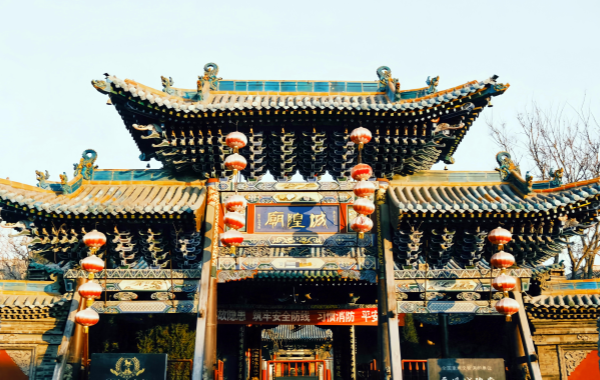
Qinhuai River, Nanjing, Jiangsu:
-
- Highlight: The largest lantern fair in China, with 10,000+ lanterns spanning 3 km.
- Activity: Cruise under lantern-adorned bridges while listening to folk songs.
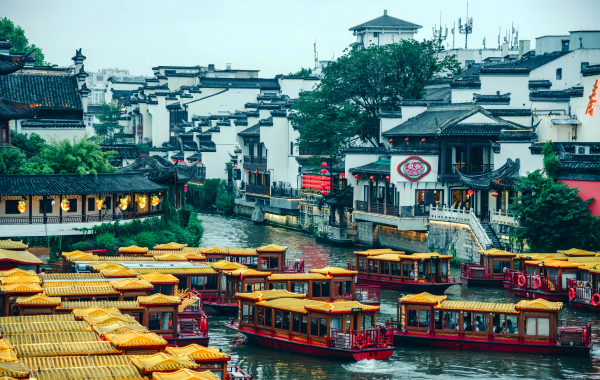
Zigong, Sichuan:
-
- Highlight: Famous for its “Dinosaur Lantern Festival,” featuring life-sized illuminated prehistoric creatures.
- Activity: Watch artisans craft lanterns from bamboo and silk.
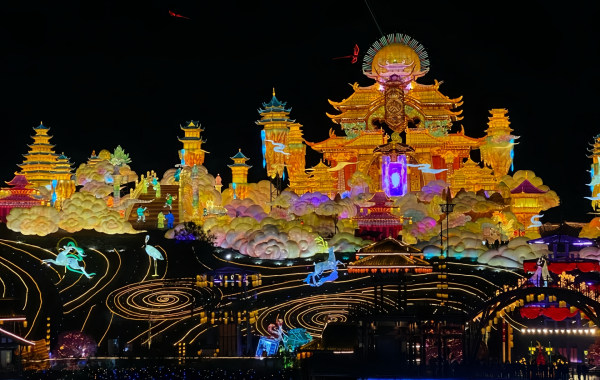
Guangzhou, Guangdong:
-
- Highlight: Yuexiu Park’s “Flower City Lantern Show,” blending floral motifs with LED technology.
- Activity: Sample Cantonesse-style tangyuan filled with coconut and mango.
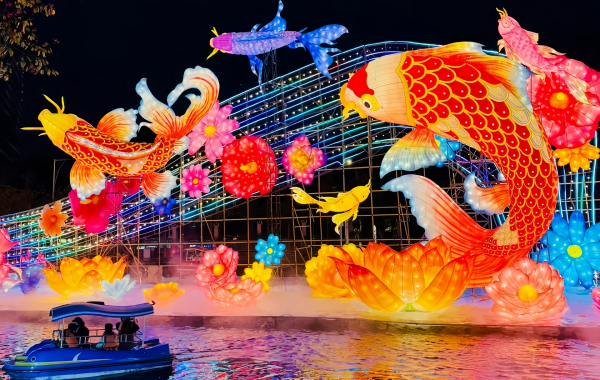
▶ Hidden Gems Off the Beaten Path
- Fenghuang Ancient Town, Hunan: A Miao minority village where lanterns are shaped like phoenixes, the town’s namesake.
- Huizhou, Anhui: Explore Hui-style architecture by lantern light in Tunxi Ancient Street.
- Dali, Yunnan: Bai minority communities light lotus-shaped lanterns on Erhai Lake.
 History & Cultural Evolution
History & Cultural Evolution
▶ Ancient Origins
- Han Dynasty (206 BCE–220 CE): Early records mention lanterns lit to honor Taiyi, the god of heaven.
- Tang Dynasty (618–907 CE): The festival became a grand spectacle, with emperors hosting feasts under lantern-lit pavilions.
▶ Modern Adaptations
- Digital Lanterns: Cities like Shenzhen use holograms and projection mapping to create immersive light shows.
- Eco-Friendly Celebrations: Biodegradable lanterns made from rice paper and bamboo are promoted to protect rivers.
- Global Reach: Yuanxiao is celebrated in Chinatowns worldwide, from London to Sydney, with lantern parades and dumpling-making classes.
 Embrace the Luminous Romance
Embrace the Luminous Romance
The Yuanxiao Festival is a celebration of light, laughter, and the enduring power of community. For travelers, it‘s a chance to witness China’s artistic ingenuity—whether solving riddles under a dragon lantern, savoring tangyuan by a river, or marveling at skyscrapers transformed into glowing canvases. Plan your visit to coincide with local parades, wear a lantern-shaped brooch for luck, and let the legend of the Jade Rabbit remind you that even in darkness, hope shines brightest. Welcome the Yuanxiao Festival with wonder—and a camera ready to capture the magic!
What Our Clients Say?
Based on 10,000+ traveler reviews












